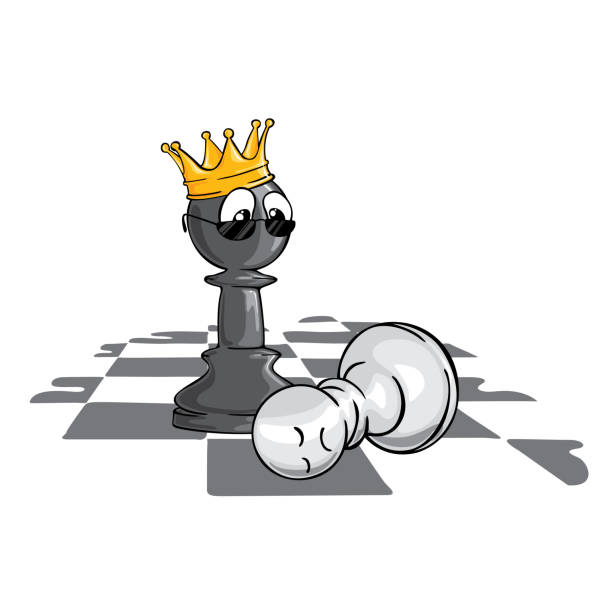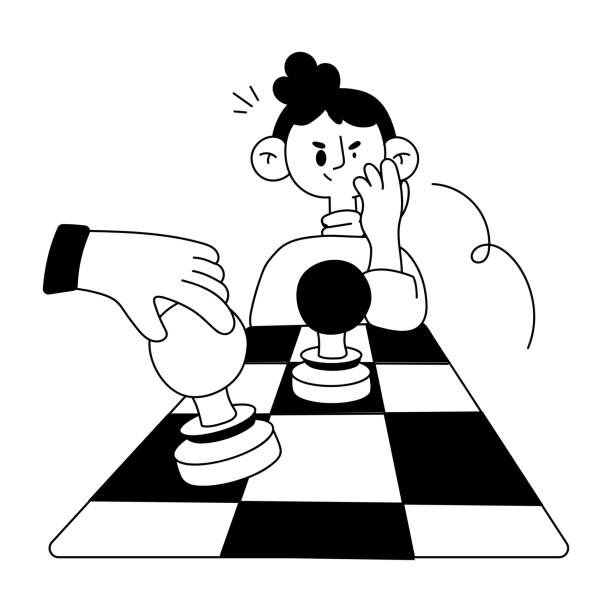Why did my chess game end in a draw?
Contents
- 1 Why did my chess game end in a draw?
- 2 Understanding Stalemate: The Deadlock Dilemma
- 3 Strategies Leading to Draws: Navigating the Equilibrium
- 4 Psychological and Tactical Factors: The Mind Games of Chess
- 5 Endgame Dynamics: The Crucible of Stalemates
- 6 Grandmaster Insights: Wisdom from the Masters
- 7 Practical Tips for Navigating Draws: A Player’s Guide
- 8 Conclusion: The Tapestry of Chess
Chess, a game of intellectual warfare, often leaves players pondering the outcomes of their battles. One of the most intriguing results is the draw. You’re engrossed in the intricate dance of pieces, making strategic moves, only to find yourself in a stalemate. But why did your chess game end in a draw? Let’s delve into the intricacies of this phenomenon and unravel the mysteries behind stalemates.

Understanding Stalemate: The Deadlock Dilemma
Stalemate, a term often whispered in hushed tones among chess players, occurs when a player’s king is not in check, but they have no legal moves available. Imagine a scenario where you’re down to your last king, with no viable moves left to make. Your opponent’s pieces encircle your king, but none can deliver the decisive checkmate blow. Stalemate. The game halts, leaving both players in a state of limbo, neither victorious nor defeated.
Consider this scenario: you’re down to your king and a knight, while your opponent has only their king left. The tension mounts as both sides maneuver, but alas, the knight cannot deliver checkmate, and the game ends in a draw. Stalemates like these illustrate the delicate balance of power on the chessboard.

Chess is a game of strategy and foresight, where every move can tip the scales of victory or defeat. Solid opening choices lay the groundwork for a balanced game, often leading to symmetrical pawn structures and equalizing tactics. As the game progresses, players must navigate exchanges and tactical motifs, seeking opportunities while avoiding pitfalls that could lead to a draw.
Imagine a game where both sides employ cautious maneuvers, exchanging pieces in a delicate dance of balance. The symmetrical pawn structures mirror each other, creating a deadlock where neither player can gain a significant advantage. In such scenarios, recognizing the signs of an impending draw becomes crucial for strategic decision-making.
For example, in a recent tournament, two grandmasters engaged in a fierce battle on the board. As the game reached its climax, both players found themselves in a deadlock, with neither able to break the other’s defenses. Despite their best efforts, the game concluded in a draw, highlighting the intricate strategies and tactical maneuvers that define high-level chess matches.
Psychological and Tactical Factors: The Mind Games of Chess
Beyond the movements of pieces lies the psychology of the players. The decision to press for an advantage or accept a draw offer hinges on the player’s mindset and assessment of the game’s dynamics. It’s a delicate balance between ambition and pragmatism, where knowing when to push forward and when to hold back can tip the scales in your favor.
Consider the psychological aspect of a drawn endgame. Your opponent senses victory within reach, yet you remain resilient, playing for every inch on the board. The tension mounts as both sides vie for supremacy, each move laden with anticipation and calculation. In the end, the game concludes not with a decisive checkmate, but with a mutual acknowledgment of the deadlock—a draw.

Endgame Dynamics: The Crucible of Stalemates
The endgame, the final frontier of a chess match, is where battles are won and lost. Recognizing drawn endgames requires keen insight into positional play and strategic maneuvering. Zugzwang, a German term meaning “compulsion to move,” often lurks in the shadows, forcing players into unfavorable positions where any move leads to ruin.
Imagine a tense endgame where both kings stand amidst a maze of pawns and pieces. Every move carries weight as players tiptoe on the brink of victory or defeat. In such moments, recognizing the signs of a drawn endgame becomes paramount, guiding players through the labyrinth of possibilities.
For instance, in the legendary match between Fischer and Spassky, the endgame saw both players locked in a battle of attrition. Despite their best efforts, neither could break the other’s defenses, leading to a drawn conclusion that echoed through the annals of chess history.
Grandmaster Insights: Wisdom from the Masters
In the realm of chess, grandmasters reign supreme, their mastery of the game unparalleled. Through their eyes, we gain insights into the nuances of drawing strategies and the art of salvaging draws from seemingly lost positions. Analyzing famous drawn games from elite tournaments offers a glimpse into the minds of these titans, unraveling the mysteries of stalemates one move at a time.
Consider the wisdom of learning from drawn games, extracting valuable lessons from each move and countermove. Through post-game analysis and reflection, players gain insights into their strengths and weaknesses, honing their skills for future encounters on the battlefield.
In the labyrinth of chess, drawing strategies serve as beacons of light, guiding players through the darkness of uncertainty. Embracing draws as positive outcomes in certain situations fosters resilience and adaptability, empowering players to navigate the complexities of the game with confidence.

- Evaluate the Position: Assess the position on the board objectively. Determine whether there are realistic chances of playing for a win or if the position is likely to end in a draw. Understanding the dynamics of the position helps in making informed decisions.
- Play Flexible Moves: Avoid overly committing to a single plan or strategy too early in the game. Instead, opt for flexible moves that maintain the balance and keep options open for both sides.
- Be Mindful of Time: Time management is crucial, especially in tournament settings where players have limited time to make their moves. Allocate time wisely, and avoid getting into time trouble, which can increase the likelihood of making mistakes and settling for a draw.
- Create Imbalances: Look for opportunities to create imbalances in the position that favor your style of play. Imbalances such as asymmetrical pawn structures, superior piece activity, or weaknesses in the opponent’s position can provide chances to play for a win.
- Stay Alert for Tactics: Remain vigilant for tactical opportunities that may arise during the game. Tactical motifs like forks, pins, and skewers can disrupt the balance and tilt the game in your favor, potentially leading to a decisive result.
- Press Without Overextending: While it’s essential to press for an advantage, avoid overextending or taking unnecessary risks that could backfire. Maintain a balanced approach, applying pressure strategically while keeping the position under control.
- Exchange Pieces Wisely: Consider the consequences of piece exchanges carefully. In certain positions, exchanging pieces can simplify the position and increase the likelihood of a draw. However, in other situations, retaining pieces may offer better chances for playing for a win.
- Be Patient and Persistent: Patience is a virtue in chess, particularly when navigating drawn positions. Stay patient and persistent, probing for weaknesses and opportunities over the course of the game. Often, small positional advantages can accumulate over time and eventually tip the balance in your favor.
- Study Endgame Techniques: Invest time in studying endgame techniques and principles. Endgames frequently offer opportunities to outmaneuver opponents and convert slight advantages into wins. Familiarize yourself with common endgame scenarios and practice essential endgame techniques to improve your chances of success.
- Learn from Drawn Games: Analyze drawn games, both your own and those of top-level players. Identify critical moments and missed opportunities that led to the draw. Extract valuable lessons from these games to enhance your understanding and decision-making in future encounters.
Consider the wisdom of learning from drawn games, extracting valuable lessons from each move and countermove. Through post-game analysis and reflection, players gain insights into their strengths and weaknesses, honing their skills for future encounters on the battlefield.
Conclusion: The Tapestry of Chess
In the tapestry of chess, draws serve as threads that bind players together in a delicate dance of strategy and skill. Through understanding the dynamics behind stalemates, players gain newfound appreciation for the complexities of the game, unraveling its mysteries one move at a time.
So, the next time your chess game ends in a draw, embrace the moment as a testament to your resilience and foresight. For in the heart of every stalemate lies the essence of chess itself—an eternal battle of wits and wills, where victory and defeat intertwine in a symphony of strategy and sacrifice.





